Catalogue d'Oiseaux, Aimard, Aldeburgh Festival | reviews, news & interviews
Catalogue d'Oiseaux, Aimard, Aldeburgh Festival
Catalogue d'Oiseaux, Aimard, Aldeburgh Festival
Birds, Messiaen and a much-loved artistic director dazzle from dawn to midnight
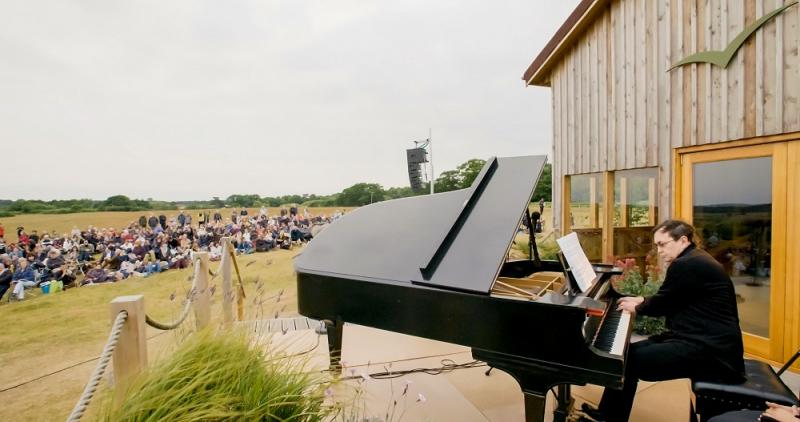
"He is one of the few pianists who will not make them sound like angry birds," said young pianist-animateur Víkingur Ólafsson in Reykjavík when I told him that in little over 24 hours' time I'd be hearing Pierre-Laurent Aimard work his way through Messiaen's Catalogue d'Oiseaux at dawn, in the afternoon and evening and close to midnight at the Aldeburgh Festival.
As lecturer and Messiaen expert Christopher Dingle pointed out before the 11pm finale, "Catalogue" is a terrible word to use for the title. It's not about obsessive ornothological collecting; this is hardly music on any spectrum other than the rainbow. The composer engages 77 bird calls in 13 pieces, deceptively titled to refer to one bird where there's a whole avian procession in a series of evocative scenes. The times of day are crucial, and rather than follow Messiaen's symmetrical sequence grouped into seven books, Aimard imaginatively reordered it according to 24 hours in the birdlife of Snape's and Minsmere's marshes.
We were out there behind the Maltings at 3.30am, witnessing the first glow and the dawn chorus (pictured above: 45 minutes before sunrise). Less spectacular than it might be in May, perhaps, but the distant persistence of a cuckoo and the discreet twittering in the reed beds as well as the ever-changing light on a dry day between rains made it a unique experience. I later learnt from Dingle and his co-presenter, ornithologist Nigel Collar, that the unexpected stridulation I heard was made by the Grasshopper Warbler, whose sound we would hear reproduced in the very last programme of the day as a soft clattery trill at the extreme high end of the piano register.
So to the oyster bar, where it was more important to face the marsh beyond than to watch Aimard (pictured below) in his first group of three. The sun rose through the window just beyond the piano space 10 minutes into Traquet Stapazin (Black-eared Wheatear); a couple of egrets flashed into sight towards the end of Traquet Rieur (Black Wheatear).
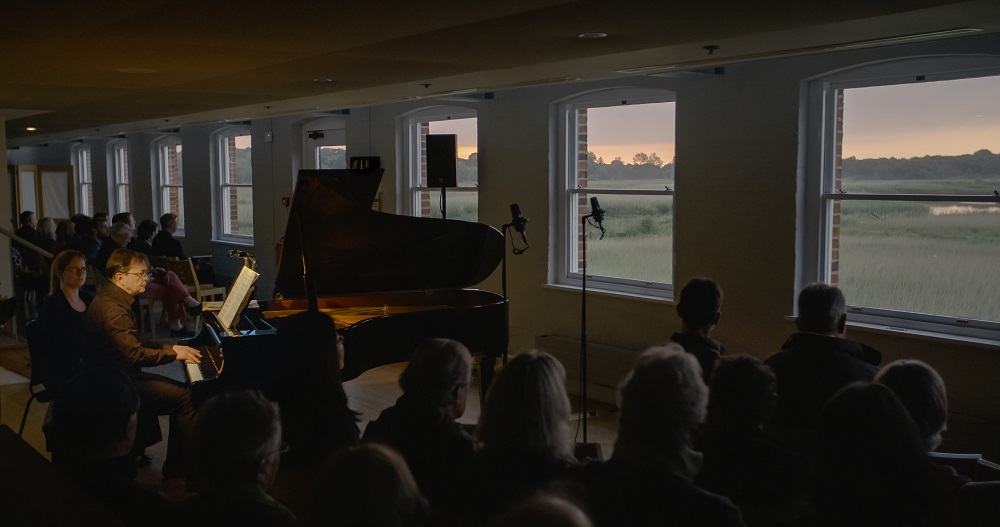
These were not, perhaps, the most striking of the 13 pieces, though they introduced us to the essential balance between slow, meditative chords and the harmonised birdcalls. Those are among the elements which make this a creative view and not a "catalogue" of ornithological accuracy. Messiaen's process often went through three or four notations from nature to score; he also took a lot from recordings, as recent research has revealed.
The high noon and heart of the sequence was indisputably in the lunchtime recital, in the perfect acoustics of the Britten Studio to a totally silent and attentive audience with the windows behind Aimard looking out on a wind-waved tree, apparently devoid of birds. Le Loriot (Golden Oriole) is of at least double significance, a lovesong to the pianist Yvonne Loriod with whom Messiaen had fallen in love and who was Aimard's teacher.
"The sun itself is the emanation of the oriole's golden song," writes the composer in one of his piquant introductions (shame we were deprived of the full action in the programme book's selection, which would lead you to believe that each piece is the portrait of only one bird when many feature). The birds twitter ecstatically in some of Messiaen's toughest writing; the sun rises and blazes in a Debussyan progression towards radiant E major. Aimard triumphed here, and shook the foundations with elemental but always controlled thunder in the numbers around the centrepiece. None would have been appropriate at dawn; here they reached their natural zenith.
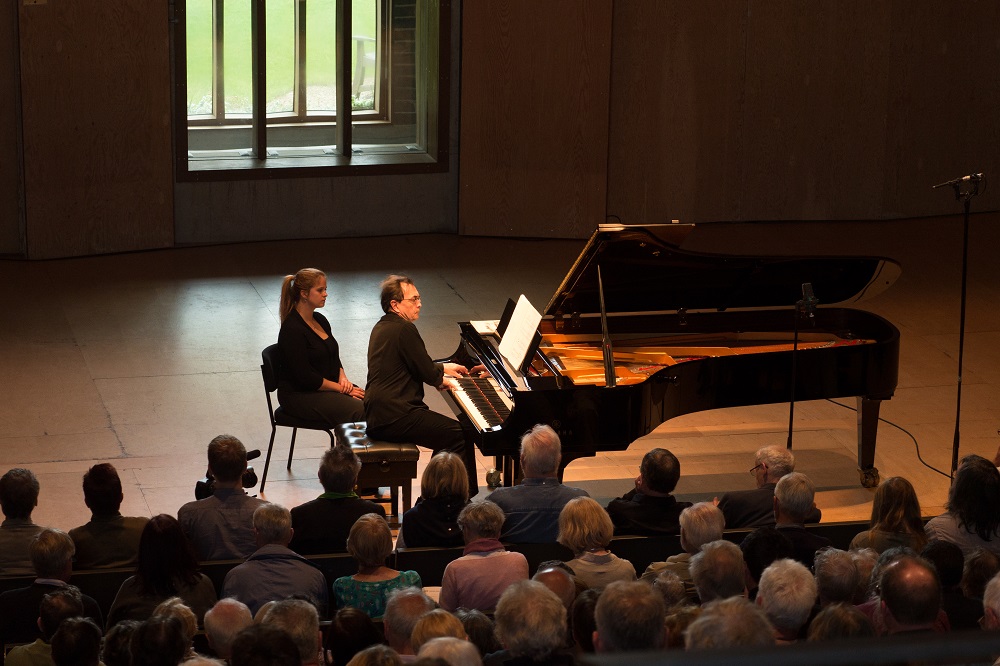
If the time between the dawn and afternoon recitals (pictured above) had lent itself to sleep, the next break offered the option of a trip to Blythburgh Church with its angel roof to hear King's College Choir. But by then it felt as treacherous to desert the bird-steeped experience in favour of a different musical sphere as breaking up a Bayreuth Ring in 1991 to hear Mozart's Cosi fan tutte in Salzburg. I didn't go to either of the disruptions, too much immersed in the spirit of each epic, and this time took an afternoon bathe off Aldeburgh beach beneath screaming seagulls, the only birds who don't seem to sleep.
Then it was off to Minsmere (pictured below), the RSPB's flagship site responsible for reintroducing the avocet, the organisation's signature bird, for a risky al fresco experience on Whin Hill. If Messiaen was leading many of us back to ornithological studies, this major sponsor seemed to have brought plenty of twitchers to Messiaen in an audience which remained varied throughout the day.
Dark clouds rolled slowly in and there were a few spots of rain, but it held off until two hours later in what turned out to be a perfect window of a day. Bird sightings down at one of the hides had been relatively sparse, though the bittern, whose low boom I longed to hear, had been spotted four times up to 1.45pm. Only blackbirds and rooks responded to the amplified piano, but that's always a big "only"; Messiaen archly described blackbirds as "our little servants of immaterial joy". On the previous evening, a lady coming out of the Aldeburgh Cinema and seeing me rapt beneath an alpha blackbird’s resourceful song on the scaffoiding of a house opposite asked if was a nightingale; no, I replied, but there was no need for disappointment.
First up at Minsmere was the chromatic rock face for the Alpine Chough and its mountain companions, the toughest of the sequence; last, to my mind the most poetic of all – and placed at the end of the original sequence – Le Courlis Cendre, the Curlew. The piano, so ideal for the rapid repetitive notes of birdsong, can't do direct reproduction of glissandi like the curlew's, but Messiaen's solution is so imaginative, upward swirls against haunting minor chords in the bass. Lying on a picnic blanket in meditative mood, I jumped out of my skin at the first sounding of the Finistere foghorn which Messiaen so dramatically incorporates into his Breton landscape.
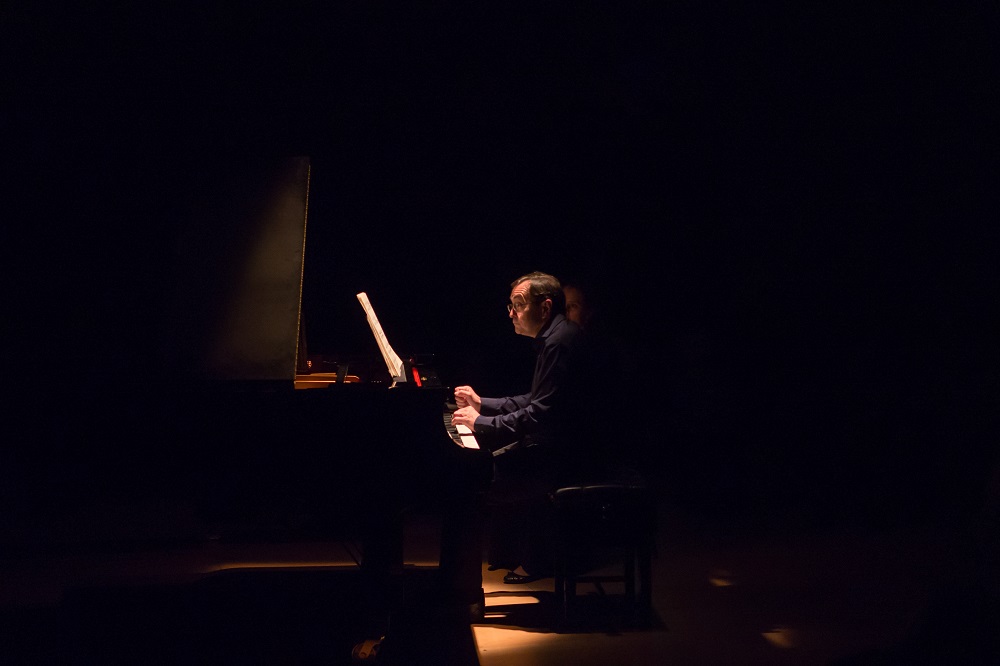
Too early to hear the Minsmere nightingales, we were bussed back to Snape, the talk and the grand finale (pictured above). Seats had been removed from the Britten Studio; most of us lay on the floor or on mats in the dark with the only light on the piano. Again, this was no easy night meditation. After the scary owls of La Chouette Hulotte and the sustained midnight reverie of L'Alouette Lulu (the Woodcock), Aimard chose to end with the longest catalogue-cum-evocation of them all, central to the original and the most apt paraphrase of our day's natural experience going back to that magical dawn: La Rousserolle Effarvate (Reed Warbler), Messiaen taking us through a 27-hour marsh odyssey with more fabulous, rolling rhythmic complexity effortlessly handled by Aimard along the way. He reciprocated the standing ovation (pictured below) with applause for the long-termers and a kiss planted on his last score of the day.
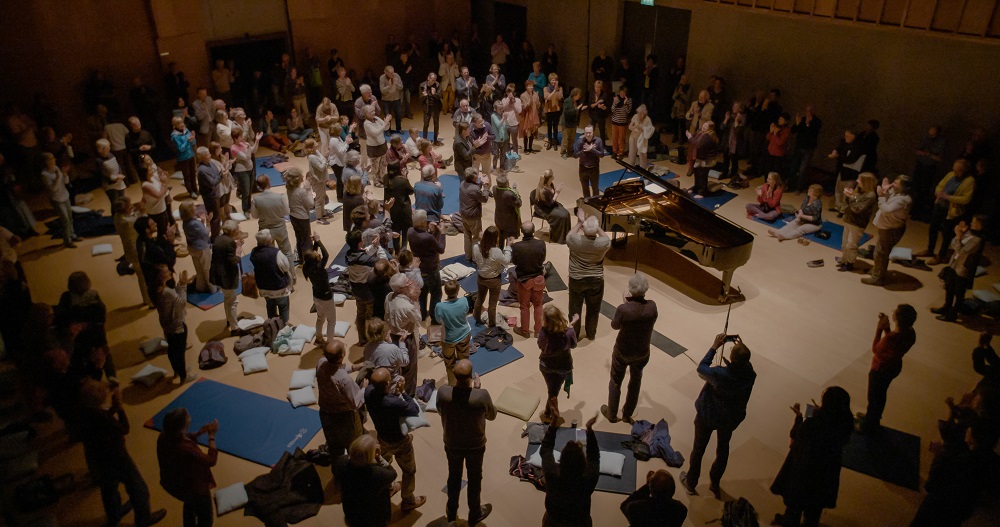
Our own journey had taken 21 hours, but even after all that it wasn't easy to sleep, and I'll be digesting the experience long after this review. In his last year as Artistic Director before he hands over to Roger Wright – and he has no intention of bowing out completely from the place he loves so much – this most affable and courteous of pianists has pulled off an epic as magnificent in its way as Grimes on the Beach. Unrepeatable, unforgettable.
The future of Arts Journalism
You can stop theartsdesk.com closing!
We urgently need financing to survive. Our fundraising drive has thus far raised £49,000 but we need to reach £100,000 or we will be forced to close. Please contribute here: https://gofund.me/c3f6033d
And if you can forward this information to anyone who might assist, we’d be grateful.

Subscribe to theartsdesk.com
Thank you for continuing to read our work on theartsdesk.com. For unlimited access to every article in its entirety, including our archive of more than 15,000 pieces, we're asking for £5 per month or £40 per year. We feel it's a very good deal, and hope you do too.
To take a subscription now simply click here.
And if you're looking for that extra gift for a friend or family member, why not treat them to a theartsdesk.com gift subscription?
more Classical music
 Gesualdo Passione, Les Arts Florissants, Amala Dior Company, Barbican review - inspired collaboration excavates the music's humanity
At times it was like watching an anarchic religious procession
Gesualdo Passione, Les Arts Florissants, Amala Dior Company, Barbican review - inspired collaboration excavates the music's humanity
At times it was like watching an anarchic religious procession
 Cockerham, Manchester Camerata, Sheen, Martin Harris Centre, Manchester review - re-enacting the dawn of modernism
Two UK premieres added to three miniatures from a seminal event of January 1914
Cockerham, Manchester Camerata, Sheen, Martin Harris Centre, Manchester review - re-enacting the dawn of modernism
Two UK premieres added to three miniatures from a seminal event of January 1914
 Kempf, Brno Philharmonic, Davies, Bridgewater Hall, Manchester review - European tradition meets American jazz
Bouncing Czechs enjoy their Gershwin and Brubeck alongside Janáček and Dvořák
Kempf, Brno Philharmonic, Davies, Bridgewater Hall, Manchester review - European tradition meets American jazz
Bouncing Czechs enjoy their Gershwin and Brubeck alongside Janáček and Dvořák
 Solomon, OAE, Butt, QEH review - daft Biblical whitewashing with great choruses
Even a top soprano and mezzo can’t make this Handel paean wholly convincing
Solomon, OAE, Butt, QEH review - daft Biblical whitewashing with great choruses
Even a top soprano and mezzo can’t make this Handel paean wholly convincing
 Two-Piano Gala, Kings Place review - shining constellations
London Piano Festival curators and illustrious friends entertain and enlighten
Two-Piano Gala, Kings Place review - shining constellations
London Piano Festival curators and illustrious friends entertain and enlighten
 Echo Vocal Ensemble, Latto, Union Chapel review - eclectic choral programme garlanded with dance
Beautiful singing at the heart of an imaginative and stylistically varied concert
Echo Vocal Ensemble, Latto, Union Chapel review - eclectic choral programme garlanded with dance
Beautiful singing at the heart of an imaginative and stylistically varied concert
 Scott, Irish Baroque Orchestra, Whelan, RIAM, Dublin review - towards a Mozart masterpiece
Characteristic joy and enlightenment from this team, but a valveless horn brings problems
Scott, Irish Baroque Orchestra, Whelan, RIAM, Dublin review - towards a Mozart masterpiece
Characteristic joy and enlightenment from this team, but a valveless horn brings problems
 Classical CDs: Voice flutes, flugelhorns and froth
Baroque sonatas, English orchestral music and an emotionally-charged vocal recital
Classical CDs: Voice flutes, flugelhorns and froth
Baroque sonatas, English orchestral music and an emotionally-charged vocal recital
 Kanneh-Mason, Britten Sinfonia, Shave, Milton Court - a grin and a big beaming smile
A pair of striking contemporary pieces alongside two old favourites
Kanneh-Mason, Britten Sinfonia, Shave, Milton Court - a grin and a big beaming smile
A pair of striking contemporary pieces alongside two old favourites
 theartsdesk at the New Ross Piano Festival - Finghin Collins’ musical rainbow
From revelatory Bach played with astounding maturity by a 22 year old to four-hand jazz
theartsdesk at the New Ross Piano Festival - Finghin Collins’ musical rainbow
From revelatory Bach played with astounding maturity by a 22 year old to four-hand jazz


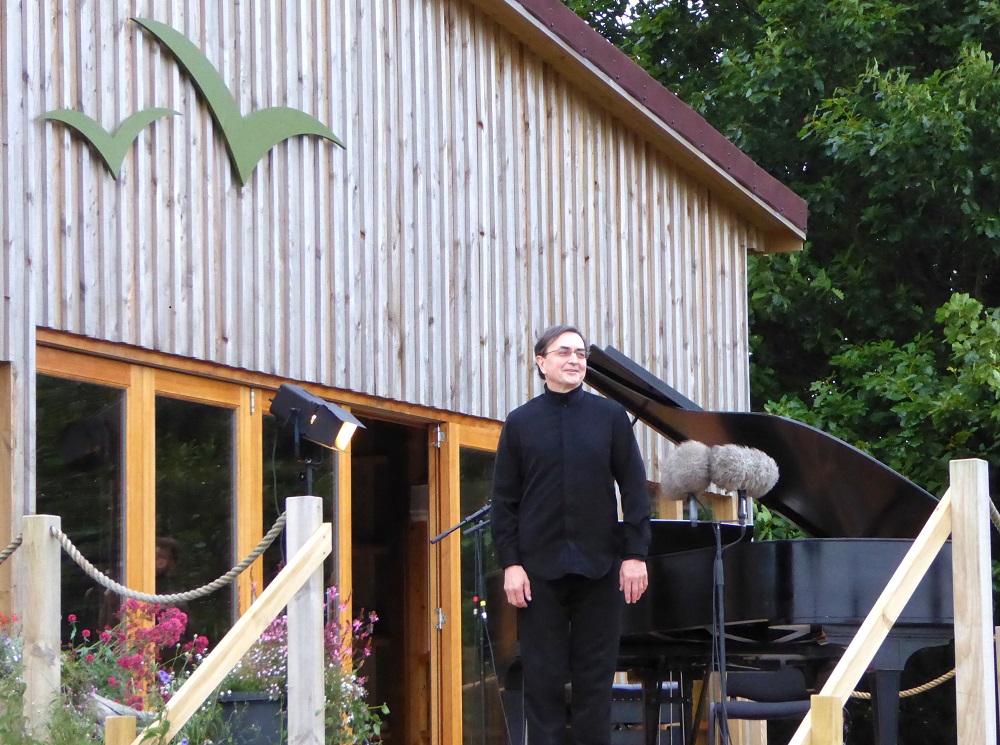
Add comment